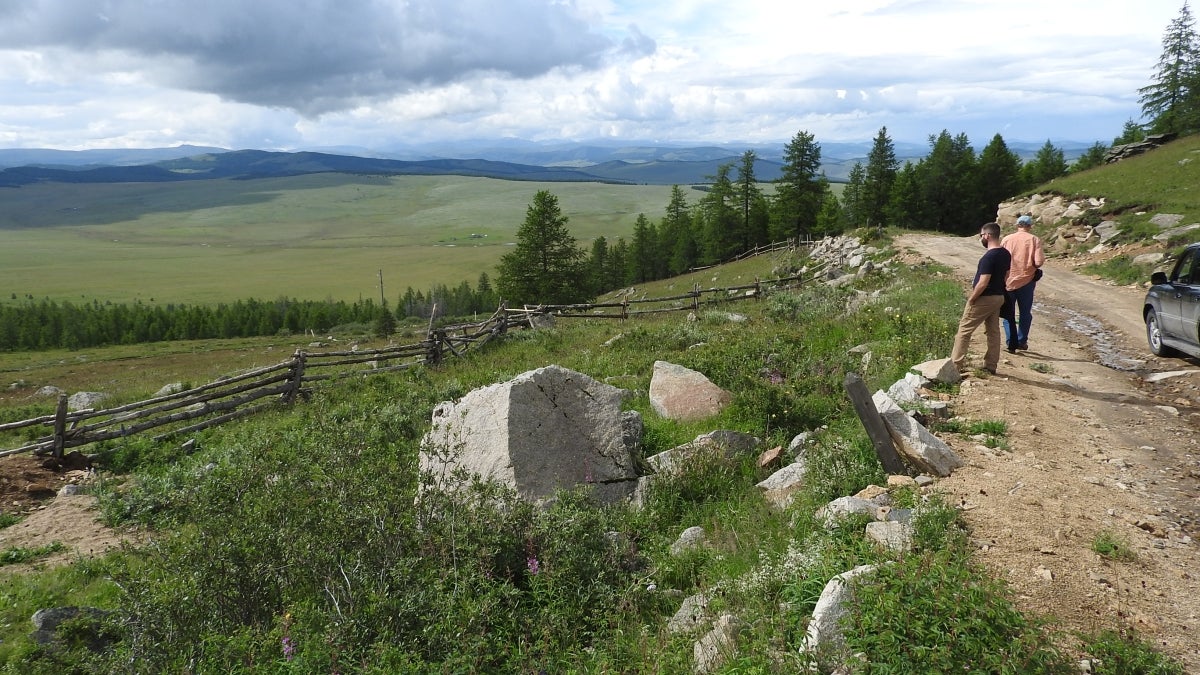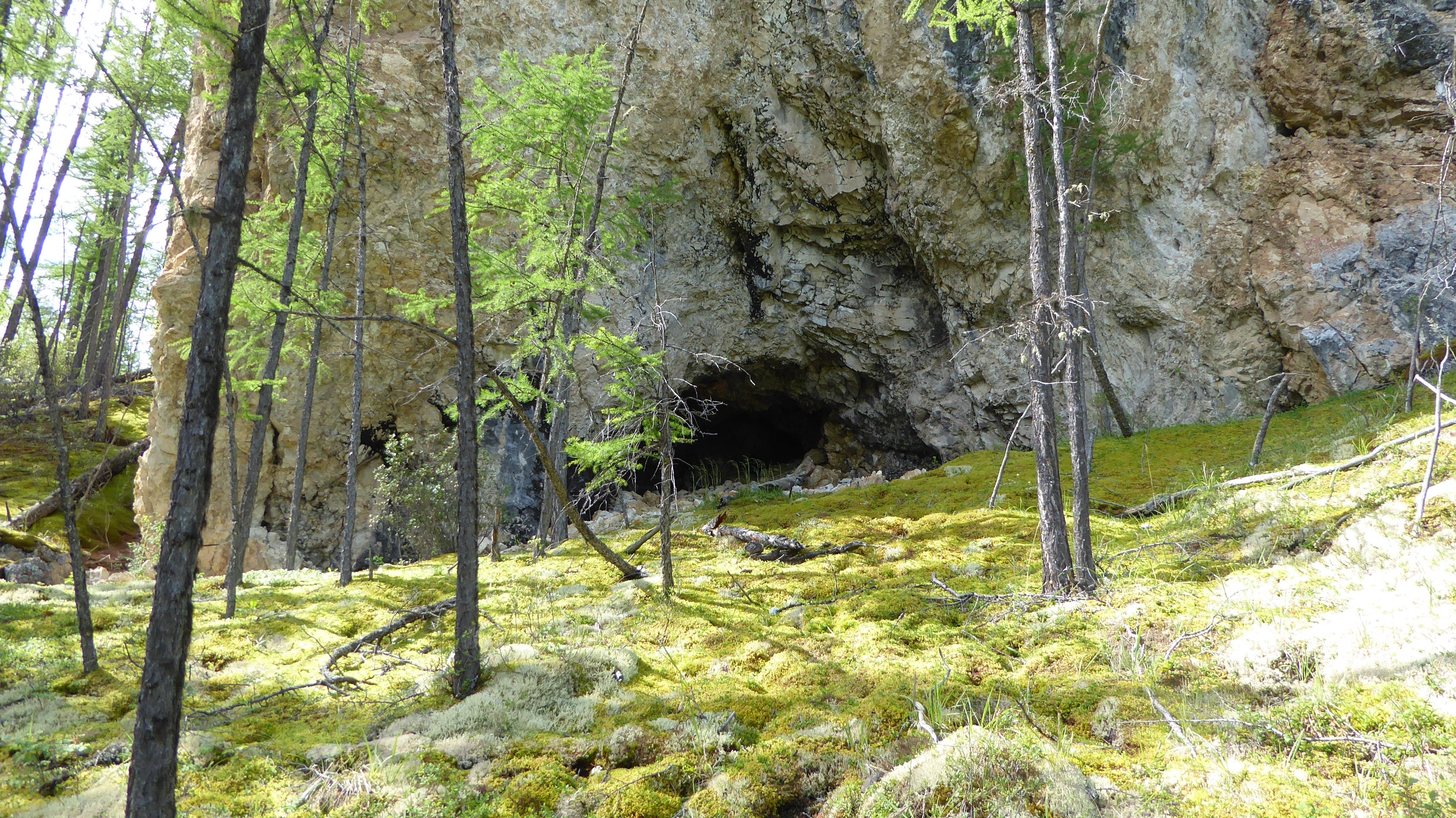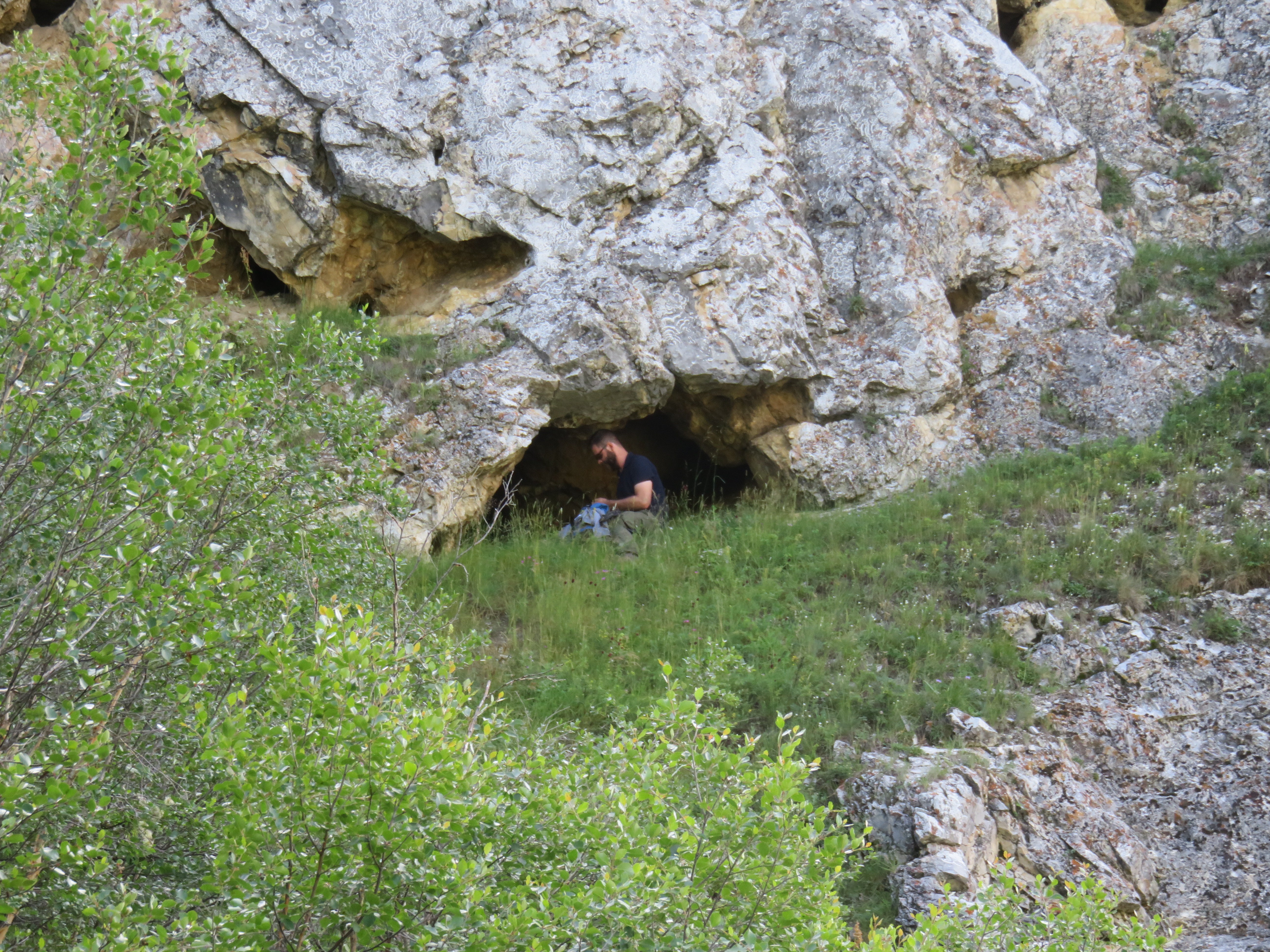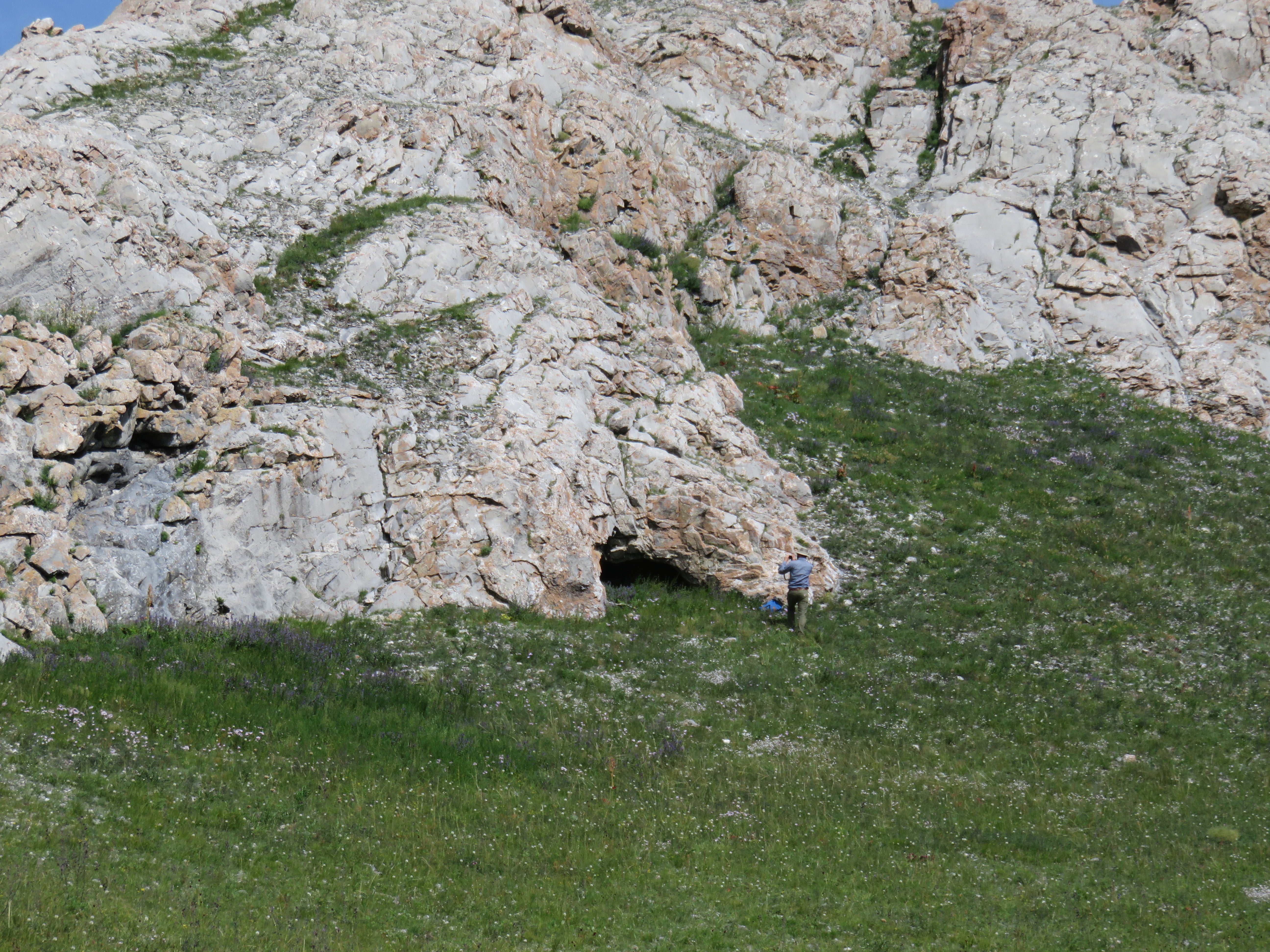When archaeologist Charles Perreault traveled to Mongolia for some investigative fieldwork, he didn’t bring the typical tool set of shovels and spades. Instead, he brought two all-terrain Jeeps, beginning a new project that will improve our knowledge of the early hominin groups that occupied northeast Asia, including ancient Homo sapiens, Neanderthals and a newly discovered species called Denisovans.
As an assistant professor at Arizona State University’s School of Human Evolution and Social Change, Perreault studies cultural evolution, or the way that people share cultural information like technology through social interaction. He is also an evolutionary anthropologist, meaning he looks at archaeological evidence to research the ancestors of modern humans.
Perreault did his master’s thesis on basketry technology in Peru, but as he worked to finish his graduate program, he often found himself being driven by questions about human evolution. Finding the answers to those questions soon required him to start looking beyond more recent archeological sites in the Americas to older, more foundational sites in Eurasia.
In graduate school, Perreault worked on the riddle of why humans first decided to live in the high-altitude environment of Tibet. But it was Mongolia that truly began to draw Perreault’s interest, particularly after archaeologists found millennia-old hominin bone fragments in a cave near the country’s shared border with Russia in 2008.
A little revolution
The Russian cave finding that inspired Perreault was significant for several reasons — first, because some bone fragments within were identified as belonging to Neanderthals. Before then, Perreault explained, scientists believed that Neanderthals were mostly limited to Western Europe. Suddenly, their range had doubled.
Second, analysis of part of a pinky bone from the cave revealed the existence of an entirely new hominin species, dubbed Denisovans after the cave where scientists found the fragment. These Denisovans — cousins of Neanderthals and modern humans — were the first species to ever be identified on ancient DNA alone.
Lastly, further analysis of other ancient bones from the site suggested that Neanderthals had interbred with Denisovans at some point in history. And by comparing the Neanderthal and Denisovan DNA samples to modern human DNA samples, scientists found that people today have genes from both groups in their DNA. This means that Neanderthals and Denisovans also interbred with ancient Homo sapiens — a finding that sheds new light on the interactions between hominin groups thousands of years ago.
One of the rock shelters surveyed by ASU assistant professor Charles Perreault in northern Mongolia. Photo by Perreault
“It led to a little revolution in our understanding of human evolution outside of Africa,” Perreault said. “As modern humans expanded their territories, they weren’t just colonizing some empty world. They were entering and colonizing areas populated with other hominin species … maybe with different language, clothing and culture. That’s crazy when you think about it.”
It was just crazy enough, in fact, to inspire Perreault to begin his own journey across the globe to Mongolia. Part of the appeal, of course, was the chance to do archaeology in the region of the groundbreaking Denisovan find — but the undertaking was not without its challenges.
“We have to build everything from the foundation,” Perreault said. “We know little about that part of the world, so the effort is just to get a basic understanding of [questions like], ‘When did people arrive in that region?’”
Research, risks and rocky roads
By summer 2016, Perreault found himself in the Darkhad Valley of northern Mongolia, but before he could even think about excavating, he had to first find potential archaeological sites. He and his team of two drivers, two archaeologists from the Mongolian Institute of Archaeology and two American archaeologists formed an off-road caravan. Every day, they drove for eight to 10 hours, crossing miles of mountains and rivers — hence the all-terrain Jeeps.
“The goal of the trip was to find prospective sites to go back to and do excavation. So this time around, it was just traveling, trying to find caves or rock shelters,” Perreault said. “We looked at the caves to see if there were any cultural artifacts on the surface, but we didn’t dig a single hole.”
Perreault explores a rock shelter in the southern part of the Darkhad Valley. Photo by David B. Madsen
With a daunting amount of ground to cover and limited time to cover it, the team knew they couldn’t afford to just throw darts at a map. Instead, Perreault tried to gather as much information as possible in advance. By looking at geological maps, for example, he was able to note the locations of limestone outcrops, an ideal rock type for cave formation. He also reviewed reports and papers from other archaeology projects near Mongolia to see what others had found. He even tracked down and talked to another archaeologist who had once driven through the region 10 years prior and reported seeing a few rock shelters.
“The good type of rock is there, people have seen rock shelters, Mongolia has a deep archaeological record, and very important sites have been found in similar geological settings in Russia,” Perreault said. “Taken together, all these things suggest to us that this is an area that has some potential.”
Of course, no amount of advance research guarantees success in the field.
“It’s possible we could have gone there and found nothing,” he said. “But it went very well; it went better than I expected.”
In fact, by the end of the three weeks, Perreault’s team had found about a dozen rock shelters.
Now that the first step is done, he plans to do some test excavations next summer in the three or four more promising caves. If all goes well, a bigger team of workers and researchers will come in to do a full excavation — and with the possibility of rock-hard permafrost to dig through, that looks to be no small feat.
Perreault is shown collecting data in front of a rock shelter in Mongolia. Photo by David B Madsen
Perreault explained that in the initial stages of an archaeological project, much of the energy is devoted to excavation, with a preliminary analysis of artifacts sometimes conducted in the field. For example, students often help by cleaning and cataloging artifacts on site.
Once the team has excavated a greater portion of the site, which could be years later, the primary investigator will do a deeper analysis of the uncovered artifacts.
Perreault plans to be involved both in the excavation and the artifact analysis in later stages of the project. He is excited for the new discoveries the sites might yield. Though these archaeological ventures tend to be long affairs, he welcomes the challenge.
“Hopefully, there’s enough stuff there to keep me busy for the next 10 years or so,” he said.
More Science and technology

ASU postdoctoral researcher leads initiative to support graduate student mental health
Olivia Davis had firsthand experience with anxiety and OCD before she entered grad school. Then, during the pandemic and as a result of the growing pressures of the graduate school environment, she…

ASU graduate student researching interplay between family dynamics, ADHD
The symptoms of attention deficit hyperactivity disorder (ADHD) — which include daydreaming, making careless mistakes or taking risks, having a hard time resisting temptation, difficulty getting…

Will this antibiotic work? ASU scientists develop rapid bacterial tests
Bacteria multiply at an astonishing rate, sometimes doubling in number in under four minutes. Imagine a doctor faced with a patient showing severe signs of infection. As they sift through test…



